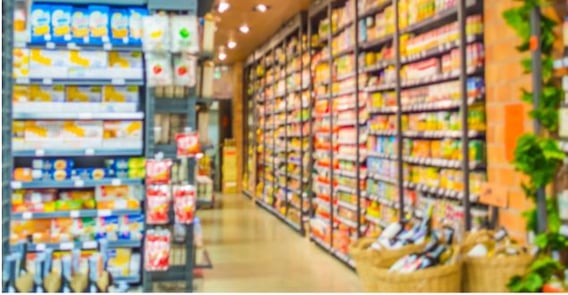Shopping on the Internet: when it comes to books, clothing and electronics, this has long-since become commonplace. Now the food industry is making huge strides to catch up. No matter whether it is chocolate, cookies or granola – the percentage of groceries that have never seen the inside of a supermarket is on the rise.
According to the latest projections, roughly 15 percent of all commodities could be sold via eCommerce channels by 2025. If you combine all prognosis, experts predict the share of sales in Germany to reach five percent by 2025; for North America, the number is 15 percent, and similar growth rates are expected for China.
Even if the share of eCommerce is growing much more slowly in Germany than in other countries, it is nevertheless rising year by year: according to data from the Handelsverband, in 2018 1.6 billion euros worth of food and confectionery were sold over the Internet.
Which trends affect eCommerce?
Ordering frequency and volume
Even though individual consumers only purchase tiny amounts compared to retailers, they are very demanding when it comes to product availability and shipping times: consumers want to shop spontaneously when online and expect their orders to arrive quickly – ideally on a date of their choosing. Consumers are now ordering more frequently, but in smaller amounts which is increasing the level of complexity in packaging and transport logistics. Food manufacturers and retailers have to quickly and correctly process these countless small orders, especially if their goal is to deliver on the same day, or even within hours.
Personalization
Manufacturers are seeking to stand out on the mass market for consumer goods by offering consumers the freedom to individualize products. As a result, customers can help create and shape what they buy. Not only have these products established themselves as gift or event-related articles; they also help to address the needs of increasingly fragmented target groups – e.g. for gluten-free foods or exotic flavors.
And this approach is paying off: according to a study by the US marketing company Epsilon, when customers respond positively to personalized offers, they are ten times more likely to become regulars. In addition, customers are willing to pay higher prices for personalized products.
Unlimited space
Though it may sound temptingly simple, in reality it represents a challenge for logistics and packaging alike. For example, distribution centers have to be able to accommodate this increased variety. The complexity involved in product handling and transporting products to the packaging line increases when individual product variants have to be bundled into “multi packs.”
Moreover, even if a virtually limitless number of products can be presented on the Internet – manufacturers and merchants still have only limited warehouse space. Ideally, not only the transport packaging, but also the primary and secondary packaging should reflect this and employ a space-saving design.






